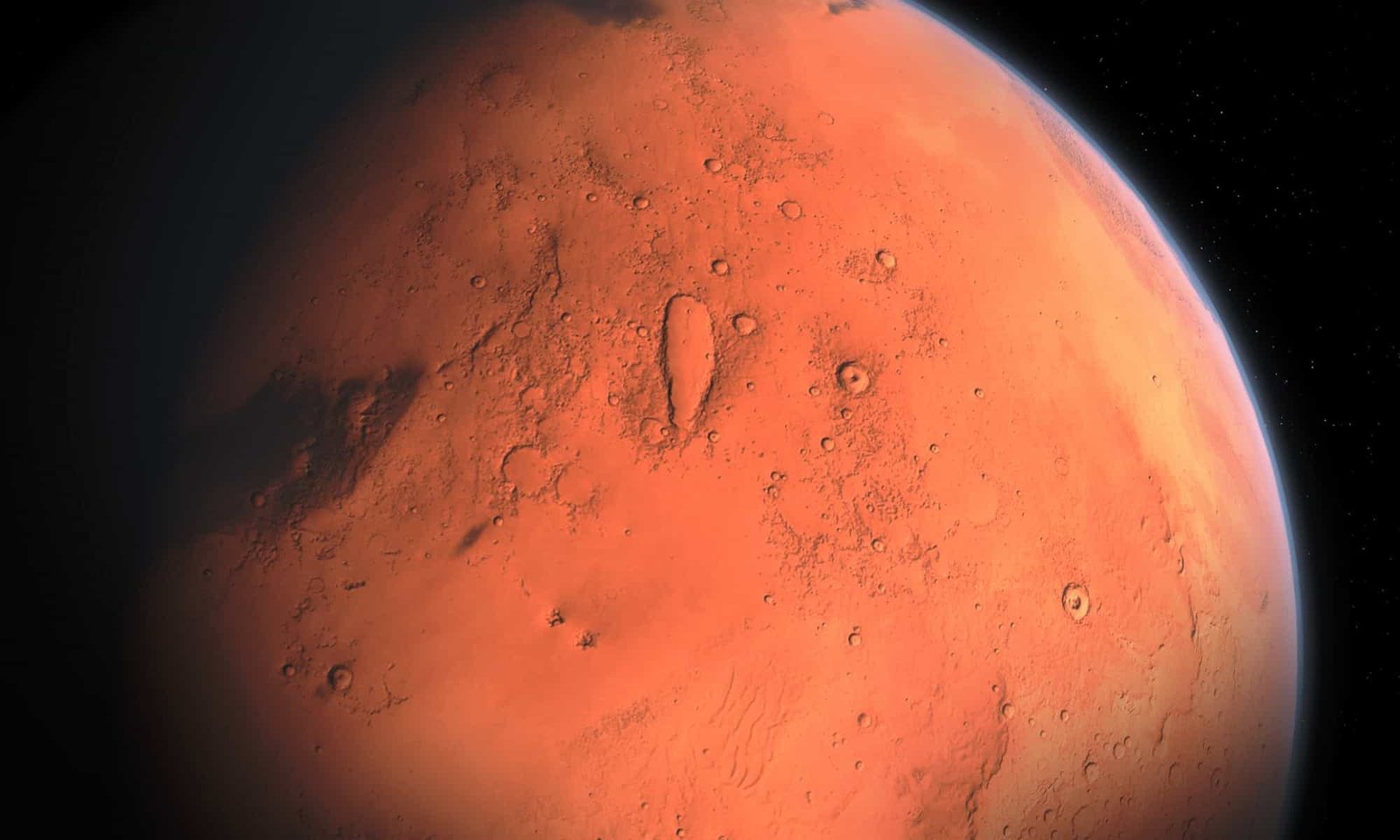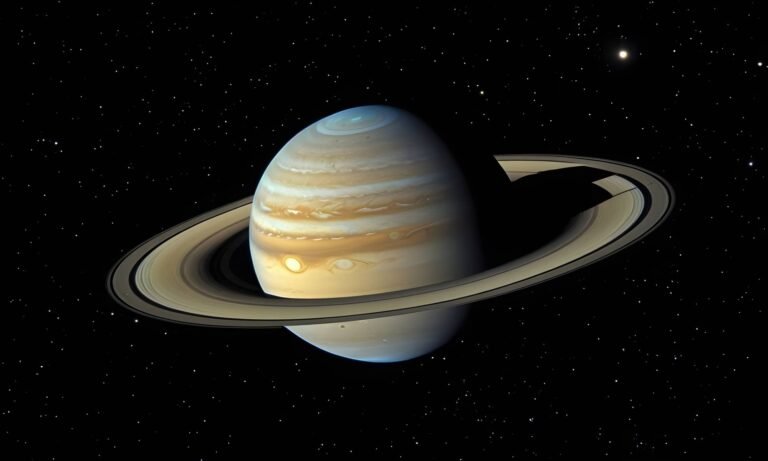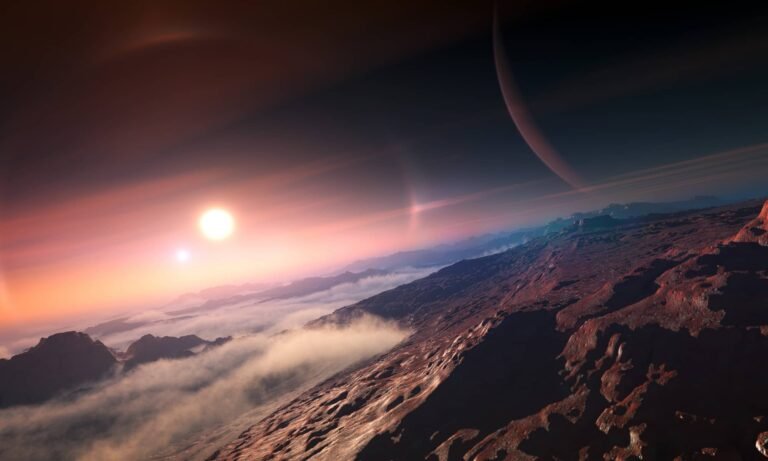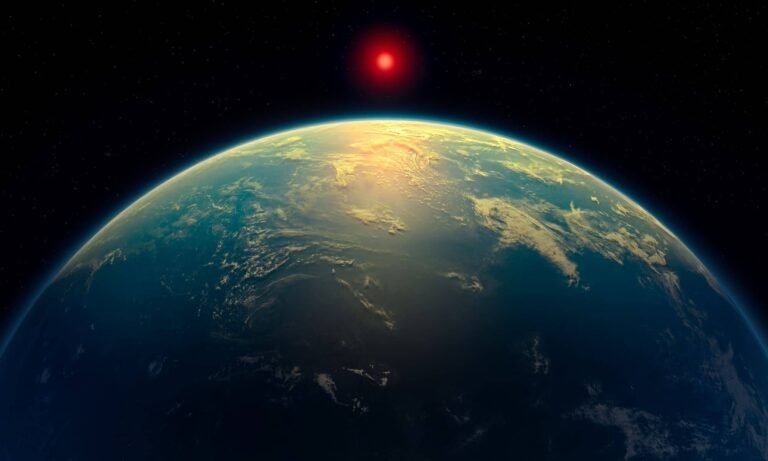Mars, often referred to as the Red Planet, is the fourth planet from the Sun and is recognized for its distinctive reddish appearance, which is primarily due to iron oxide, commonly known as rust, on its surface. This characteristic color sets Mars apart from its neighboring planets and has captivated the imagination of many cultures throughout history. With a diameter of approximately 6,779 kilometers, it is about half the size of Earth, making it one of the smaller planets in our solar system.
In terms of mass, Mars has roughly 10.7% of Earth’s total mass, which contributes to its lower gravitational pull. This lower gravity, which is about 38% that of Earth’s, has significant implications for both exploration and potential human colonization. Mars possesses a thin atmosphere composed mainly of carbon dioxide, with traces of nitrogen and argon. The atmosphere’s tenuous nature results in a surface pressure that is less than 1% of Earth’s, which presents considerable challenges for sustaining life as we know it.
One of the notable features of Mars is its polar ice caps, which are composed primarily of water and frozen carbon dioxide. These caps expand and contract with the changing seasons, a phenomenon that highlights the planet’s axial tilt and seasonal variations similar to Earth. The Martian seasons are marked by temperatures that can reach as high as 20 degrees Celsius near the equator during summer months and plunge to as low as minus 125 degrees Celsius in winter.
Throughout history, Mars has held a significant place in human culture, featuring prominently in mythology and literature. Its allure has attracted scientists and astronomers alike, influencing space exploration initiatives as researchers continue to study its geology, potential for harboring life, and future for human colonization. Mars serves as a focal point in our quest to understand our place in the universe and the possibilities of life beyond Earth.
Mars’ Geological Features
Mars is a planet of remarkable geological diversity, which offers critical insights into its history and the conditions that have shaped its surface. One of the most distinct features of Mars is Olympus Mons, the tallest volcano in the solar system, standing approximately 13.6 miles high – nearly three times the height of Mount Everest. This shield volcano is characterized by its broad, gentle slopes and caldera at its summit, suggesting a history of extensive eruptive activity. The scale and formation of Olympus Mons indicate that Mars has experienced significant volcanic processes, shedding light on the planet’s thermal evolution and potential for past geological activity.
In addition to Olympus Mons, the Valles Marineris canyon system is another prominent feature that defines the Martian landscape. Stretching over 2,500 miles in length and up to 7 miles deep, Valles Marineris is often likened to the Grand Canyon, albeit vastly larger. Research suggests that the formation of Valles Marineris may be linked to tectonic activity coupled with erosion, revealing evidence of ancient stresses within the Martian crust. This intricate system of canyons not only highlights the tectonic history of Mars but also provides a glimpse into the planet’s climatic shifts over millennia.
Moreover, the discovery of ancient riverbeds indicates that liquid water once flowed on the Martian surface, supporting theories that Mars had a much wetter and possibly habitable climate in the past. These riverbeds, alongside other sedimentary formations, offer critical evidence of the environmental conditions that could have sustained life. The interplay between volcanic activity and the presence of water paints a complex picture of Mars’ geological and environmental history, fueling ongoing scientific inquiries into the planet’s potential to support life in both its past and future.
Mars Exploration Missions
The exploration of Mars has captivated humanity for decades, leading to numerous missions that have significantly advanced our understanding of the Red Planet. The journey began with early flybys in the 1960s, including NASA’s Mariner 4, which provided the first close-up images of Mars. These initial missions set the groundwork for more elaborate investigations, leading to the deployment of orbiters and landers that could analyze the Martian surface and atmosphere in greater detail.
One of the most prominent missions in recent times has been NASA’s Perseverance rover, which landed on Mars in February 2021. Its primary objective is to seek signs of past life and collect rock and soil samples for potential return to Earth. Perseverance is equipped with advanced scientific instruments, designed to conduct in-depth examinations of the planet’s geology and climate. A notable innovation from this mission is the Ingenuity helicopter, which, after demonstrating that powered flight is possible on Mars, provides valuable reconnaissance data that enhances our understanding of the rover’s surroundings.
Additionally, the Mars Reconnaissance Orbiter (MRO) has played a critical role since its arrival in 2006. With its high-resolution imaging capabilities, MRO has provided extensive data on Martian weather patterns, water presence, and surface composition. The insights gained from MRO have been instrumental in shaping our understanding of the planet’s geological history and climatic conditions.
International collaborations have also shed light on Mars, with missions like the European Space Agency’s Mars Express and the recent Tianwen-1 mission by the China National Space Administration. These projects contribute to a global effort to uncover the mysteries of Mars, collectively enhancing our knowledge and providing a stronger foundation for future manned missions to the planet. The ongoing research and technological innovations resulting from these missions pave the way for deeper exploration and the eventual goal of human settlement on Mars.
It’s not going to do any good to land on Mars if we’re stupid.
– Ray Bradbury
The Future of Mars Exploration
The exploration of Mars stands at the forefront of scientific ambition, with various planned missions set to take place in the coming years. NASA’s Artemis program, initially intended for lunar exploration, may play a pivotal role in establishing human presence not only on the Moon but also as a stepping stone to Mars. This program emphasizes the importance of developing technologies that support sustainable exploration and colonization. Future missions are likely to utilize advanced robotics, autonomous systems, and life-support technologies to facilitate long-term stays on the Red Planet.
In addition to NASA’s initiatives, other space agencies, such as the European Space Agency (ESA) and private organizations like SpaceX, have ambitious plans for Mars exploration. SpaceX’s Starship program is particularly noteworthy, as it aims to transport humans to Mars for colonization efforts. With advancements in propulsion technology and spacecraft design, the envisioned missions could reduce travel time to Mars significantly, making the colonization aspirations more plausible.
However, the path to human exploration of Mars is fraught with challenges. Spacecraft must overcome myriad obstacles, including radiation exposure, microgravity effects on the human body, and life-support sustainability. Addressing these technological hurdles will be essential to ensure the safety and well-being of astronauts. Furthermore, discussions within the scientific community regarding the ethical implications of human activity on Mars have intensified. Questions surrounding planetary protection, contamination prevention, and the rights of potential Martian organisms fuel ongoing debates.
In conclusion, the future of Mars exploration is an intricate tapestry of innovation, challenge, and ethical consideration. As the next decades unfold, the prospect of establishing a human presence on Mars remains a tantalizing possibility that invites both excitement and contemplation among scientists, policymakers, and the public alike.
What’s More

My Blog ( 112 )
Dependence (10) Fiction (10) Karma (9) Landmarks (10) Paramount (9) Spectrum (9) Spotlight (10) Take Off (9) Terra Shapes (9) Trepidation (9) Unique (9) Virtue (9)
Amazing Stuff (9) Beyond Known (9) Controversial (9) Digital World (10) Inequities (10) Innovative (9) Metaphysics (9) Orbiting Entities (10) Our Society (10) Outer Space (9) Value Creation (10) Yearnings (10)

My Interests ( 114 )
Site Forum
Curious to dive deeper and ready to share your thoughts on this? Join the conversation and be part of the FORUM@ericroth.org Your online discussion board providing space for engaging exchanges on specific topics and shared interests across this website.











